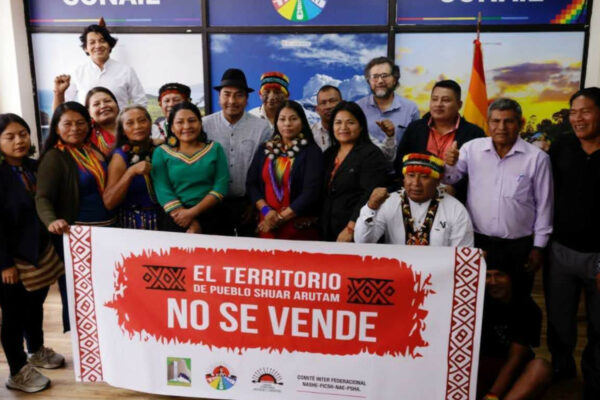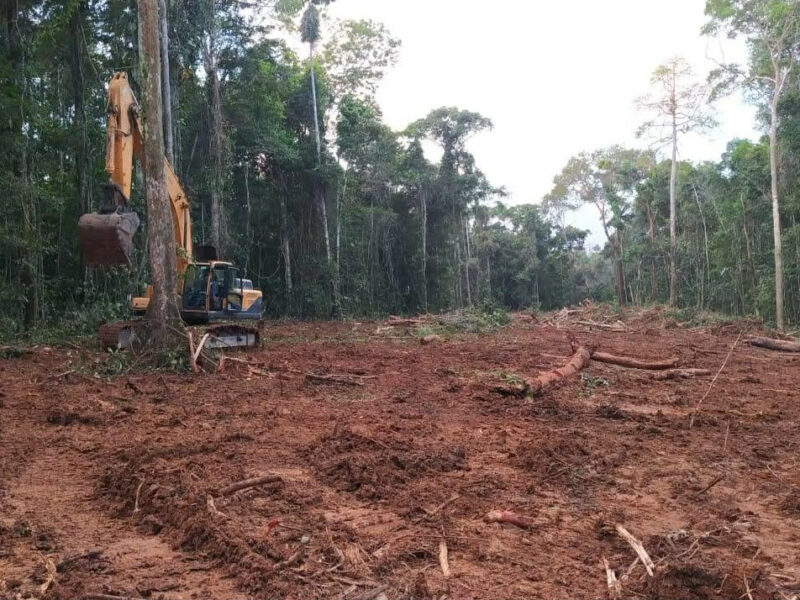Minutes before its planned release on September 25th a judge in Ecuador blocked the distribution of “A Tragedy Hidden Away”, a book detailing a massacre of 20-odd members of one indigenous Amazonian tribe, the Taromenane, by another, the Waorani. The authors, Miguel Ángel Cabodevilla, a Capuchin missionary, and Milagros Aguirre, a journalist, promptly distributed it via the internet. Faced with a public outcry over the censorship, the judge reversed her decision two days later.
That was the latest twist in the tragic tale of tribal warfare. An uncontacted, or “hidden”, tribe, the Taromenane are protected under Ecuador’s 2008 constitution. Article 57 protects the hidden peoples from “ethnocide” and blocks their territories from incursion to guarantee their rights and survival. Not, it seems, against the Waorani (who as a “recently contacted” tribe do not enjoy similar protection).
On March 24th a band of Waorani, armed with shotguns, carbines and spears, set out from the hamlets of Dikaro and Yarentaro. A week later the group found a Taromenane homestead stocked with an arsenal of spears, as well as modern objects like clothes and cans of tuna. Within 45 minutes they had massacred around 20 Taromenane, first the men, then women and children, according to Father Cabodevilla, who has seen pictures from a digital camera carried by one Wao and heard his testimony. Only two girls, aged seven and three, survived, but were taken back to the Waorani settlement, where they remain.
The Taromenane were not blameless. In March, exasperated by flights of small planes and helicopters over their homesteads, they slew Ompure, a Wao, and one of his two wives, Buganey, with long hardwood spears. The reason? He had failed to meet an impossible demand from a year earlier, when he stumbled on a group of them while hunting, to stop the racket, and ensure the cowori, or outsiders, stay well away.
Fearing a reprisal of 2003, when a group of Waorani egged on by loggers killed a large group of Taromenane, NGOs warned authorities to step in. But Father Cabodevilla and Ms Aguirre write that officials fled from the idea of compensation to Ompure’s incensed clan “like cats from water”. And when it became obvious that Ompure’s clan had begun to plot revenge, police failed to keep the Waorani from buying bullets. The government-owned El Telégrafo newspaper instead called demands that NAWE, the Waorani federation, made to oil company Repsol for compensation in the form of cars, housing and fences, “blackmail”.
The girls remain in captivity. The Waorani have allowed health officials to vaccinate them. The prosecutor-general’s office has yet to conclude its investigation, which has been proceeding at a snail’s pace.
Ecuador only began to colonise its Amazon north-east in earnest in the 1970s. Poor settlers, mostly from the southern Andes, began pouring in along with the oilmen, followed more recently by refugees from Colombia’s civil war. Cities and towns sprang up to accommodate and cater to them, as well as to folk working ranches and oil-palm plantations which began to cut into forest, even into protected areas such as the Yasuní.
For most of its original inhabitants the world changed forever. Some semi-nomadic rainforest warriors, among them the Waorani, settled in a large recognised area surrounded by parts of the Yasuní. Other, like the Tagaeri (breakaways from the Waorani) or the Taromenane, withdrew deeper into the forest. Ostensibly to protect them, Ecuadorean authorities in 2006 drew lines on the map to define an “intangible zone” in the southern part of the Yasuní and the Waorani tribal lands, with entry barred to any outsiders and all economic activity. Even so, the hidden tribes’ traditional migration routes often took them beyond the boundary.
Forest-dwellers soon realised that some cowori items, like metal pots, but also machetes and guns, can come in handy. This has kept them close to the settlements of colonists, oil workers, and Waorani, from which they would occasionally pilfer.
Father Cabodevilla blames the massacre on pressure mounting on hidden peoples, who appear to have formed four distinct groups in the greater area of the Yasuní National Park, the northern half and western flanks of which have been open to oil production. (Several Taromenane even walked by a troupe of Repsol oil workers before ambushing Ompure and his wife.)
At the same time, the populist administration of president Rafael Correa, short of cash, wants to open the whole of the remaining Amazon forest to oil exploration. In September the Congress, dominated by Mr Correa’s Alianza PAIS, rubber-stamped the opening of two fields inside the Yasuní park, including – retroactively – block 31 and the Ishpingo-Tambococha-Tiputini field, which the government had avoided developing earlier as it claimed it was the home of uncontacted tribes. Fernando Bustamante, an AP backbencher, said that article 407, which permits the congress to green-light oil and mining in protected areas, allows the congress to overrule the protection article 57 gives the hidden tribes. Much as in neighbouring Peru, some even debate whether these people may be considered citizens, given their lack of identity documents.
To ease the legislators’ conscience, the justice ministry produced a map moving tribal lands outside the two blocks, though into two other blocks that the government has put on the market. Ironically, oil-industry executives have so far balked at bidding for these contentious fields, citing the risk of strong indigenous opposition and the limited attractiveness of the contracts.













